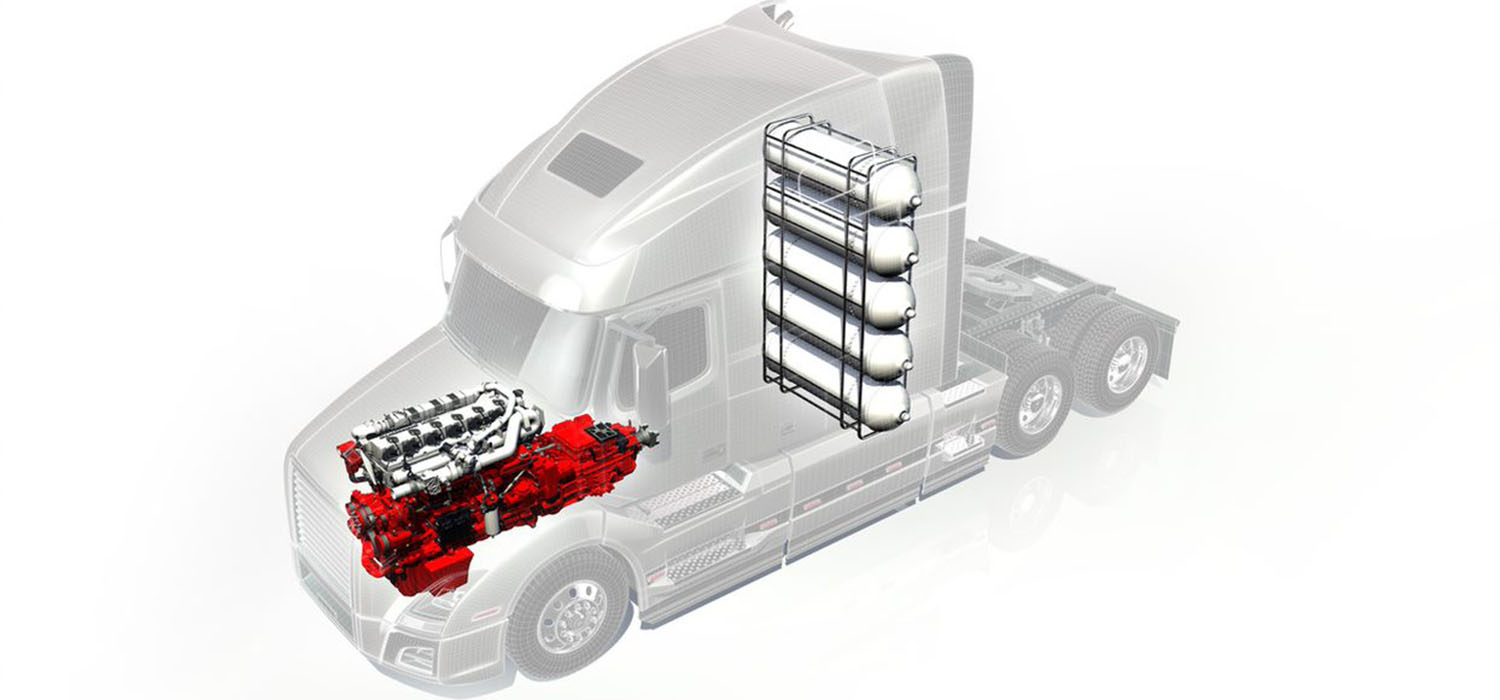Hydrogen engine insights for fleet operators
By Jim Nebergall, General Manager of the Hydrogen Engine Business

If you manage a fleet of commercial vehicles, you have probably read or heard about hydrogen engines and hydrogen fuel cells. Fuel cells have come a long way over the years, and they have a bright future. Hydrogen engines and hydrogen fuel cells each have their roles in decarbonizing the commercial transportation sector today and the decades ahead. When it comes to hydrogen engines, there are other important insights for fleets to consider in addition to reliability and durability.
Hydrogen engines are a familiar technology
Powering vehicles with hydrogen engines is as familiar as it gets—just pump hydrogen into a regular internal combustion engine.
Well, almost regular.
Hydrogen engines require modifications for safe and efficient operation, such as a specially designed ignition system to prevent issues like pre-ignition and engine knocking. However, their overall engine and drivetrain architecture closely resemble their diesel counterparts. The one exception is the fuel system. Hydrogen is stored in gas cylinders specially designed to withstand very high pressures. Training is recommended to learn safe hydrogen handling practices during maintenance.

Hydrogen internal combustion engines (ICEs) excel in efficiency and cost-effectiveness, outperforming other zero-carbon solutions. With Cummins' spark ignited technology and fuel agnostic platforms, we achieve superior brake thermal efficiency (BTE) compared to natural gas engines. Ongoing advancements enable diesel-like efficiency, while combining hydrogen ICE in hybrid powertrains and leveraging features like Cummins' ADEPT system further boosts efficiency.
Hydrogen engines are an effective way to lower emissions and to decarbonize
Crucially, hydrogen engine vehicles emit minimal CO2, primarily from the combustion of lubricants. When powered by green hydrogen, they have a carbon emissions-free well-to-wheel operation.
Operating near-zero emissions vehicles comes at a price, though. This is true of every low carbon technology. For certain applications, however, examples of hydrogen engines will likely be more prevalent, such as heavy-duty trucks.
When are hydrogen engine vehicles right for your business?
Suppose your business aims to reduce greenhouse gas emissions. When is a hydrogen engine vehicle the right solution?
A fueling strategy is key, particularly for fleets returning to a central depot nightly. By installing hydrogen fueling points at the depot, a familiar refueling strategy for CNG vehicle operators is established.
If your vehicles tend to drive back and forth between distribution centers that are within a few hundred miles of each other, a similar refueling system can work.
If you operate long-haul trucks on fixed routes, hydrogen engines can also make sense so long as hydrogen fueling points are installed along the routes. Several companies and government entities are building hydrogen corridors for this very purpose.
Medium and heavy-duty vehicles driving over 200-300 miles per day benefit more from hydrogen engines than current battery electric technology. Electric trucks necessitate large batteries due to high power requirements. While a larger battery theoretically extends the range, it results in drawbacks like reduced cargo space, increased charging time, and higher capital costs. In contrast, hydrogen engine vehicles refuel quickly, match diesel vehicles in range, and maintain payload capacity.
Cummins is developing hydrogen engines, including 6.7 and 15-liter variants, which will be offered to vehicle manufacturers after rigorous testing. Collaborating with Werner Enterprise, a prominent transportation company, Cummins validates its new 15-liter natural gas and hydrogen engines. As hydrogen engines can seamlessly replace traditional ones, your favorite truck may soon have a hydrogen engine version in the coming years.
Never miss the latest and stay ahead. Sign-up below to receive the latest in technologies, products, industry news, and more.
Author Profiles

Jim Nebergall, General Manager of the Hydrogen Engine Business
Jim Nebergall is General Manager of the Hydrogen Engine Business at Cummins Inc. and leads the company’s global efforts in commercializing hydrogen-fueled internal combustion engines. Hydrogen internal combustion engines are an important technology in the company’s accelerated path to decarbonization. Jim joined Cummins in 2002 and has held numerous leadership roles across the company. Most recently, Jim was the Director of Product Strategy and Management for the North American on-highway engine business. Jim is passionate about innovation and has dedicated his Cummins career to advancing technology that improves the environment. He pushed the boundaries of customer-focused innovation to position Cummins as the leading powertrain supplier of choice, managing a portfolio ranging from advanced diesel and natural gas to hybrid powertrains. Jim graduated from Purdue University with a bachelor’s degree in electrical and computer engineering. In 2007, he completed his Master of Business Administration degree from Indiana University.
Related Tags